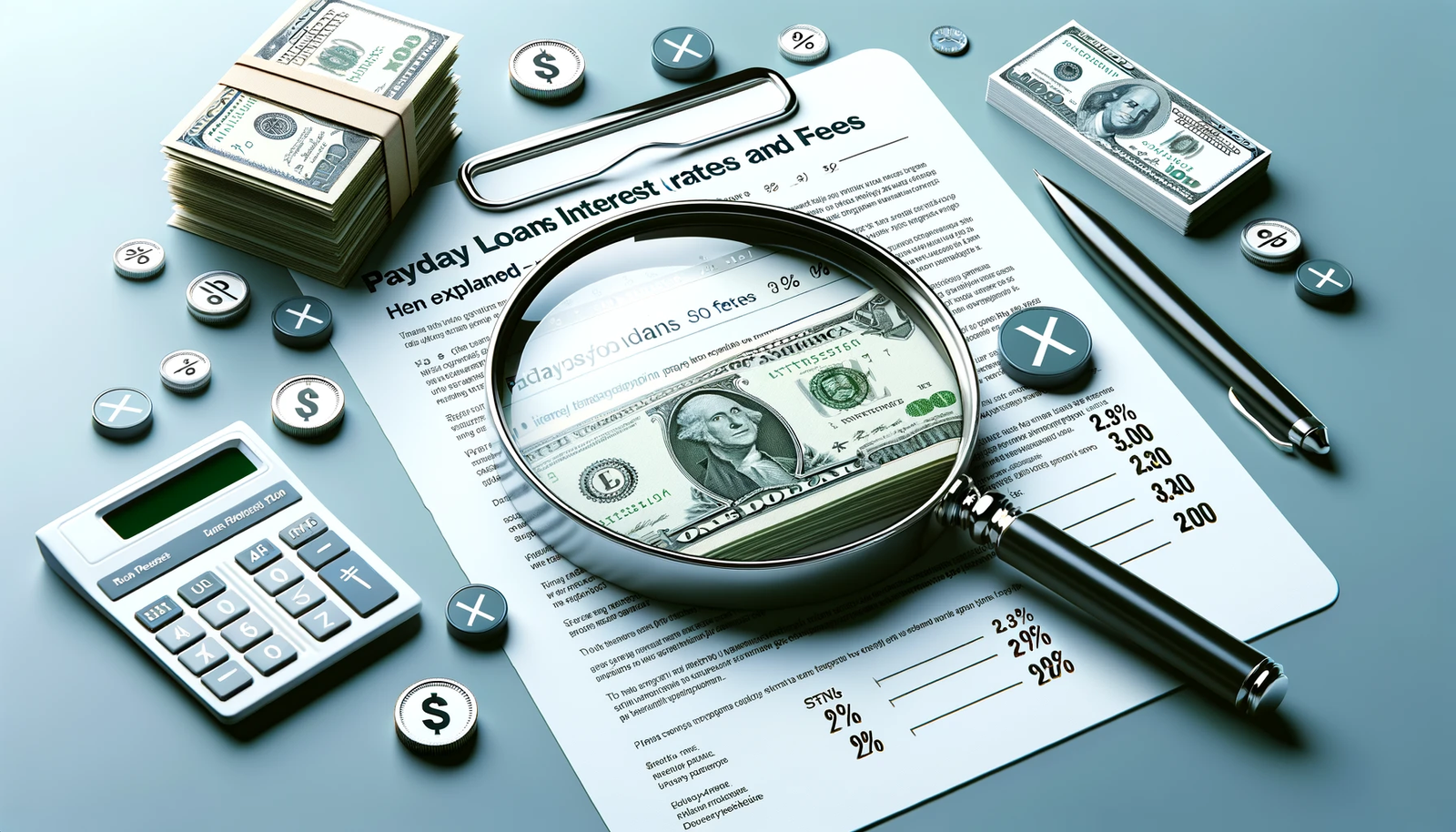Understanding the true cost of a payday loan is crucial to making informed financial decisions. In this article, we’ll dive deep into the world of payday loan costs, decoding the interest rates and fees to give you a clear picture of what you’re signing up for.
The Basics of Payday Loans Interest Rates
Understanding APR in Payday Loans
- What Exactly is APR?: APR represents the cost of borrowing over a year and includes both interest and any additional fees. It’s expressed as a percentage. Unlike a simple interest rate, APR gives a more comprehensive view of the loan cost.
- Sky-High Rates: It’s not uncommon for payday loans to have APRs exceeding 300%, and sometimes even reaching upwards of 400% or 500%. These rates are significantly higher than most other financial products. For example, a $300 payday loan with a 15% fee over two weeks equates to an APR of almost 400%.
- Why So High?: Payday loans are unsecured and typically involve small amounts of money to be repaid over a short period. Lenders set high APRs to cover potential risks associated with these loans.
Comparing Payday Loans to Other Financial Products
- Credit Cards: For comparison, credit card APRs usually range between 12% and 30%. While still a form of high-interest debt, credit cards offer lower rates compared to payday loans.
- Personal Loans: Personal loans usually come with lower APRs, often between 6% to 36%. The longer repayment terms and the requirement of a credit check make these loans fundamentally different from payday loans.
- The Impact of High APR: The exorbitant APRs of payday loans can make them a costly option. A loan that seems manageable on a short-term basis can become financially burdensome due to the high APR.
Fees, Fees, and More Fees
Processing Fees: The Cost of Convenience
- What Are Processing Fees?: These are fees charged by the lender to cover the administrative expenses associated with processing the loan. This can include application review, credit checks, and the logistics of transferring funds.
- How Much Are They?: The amount varies by lender and can be either a flat fee or a percentage of the loan amount. For instance, you might pay an additional $10 to $30 on a $100 loan.
- Impact on Total Cost: These fees are added to the loan’s principal and the payday loans interest rates, increasing the overall repayment amount. It’s crucial to factor in these fees when calculating the total cost of your loan.
Rollover Fees: The Price of Extension
- Understanding Rollover Fees: If you’re unable to repay the loan by the due date, some lenders offer a rollover option, extending the loan term for another period. This comes with additional fees.
- Accumulating Costs: Rollover fees can compound quickly. For example, rolling over a $300 loan with a $45 fee could mean you’ll owe another $45 on top of the original amount and the initial fee, totaling $390.
- Risks of Rollovers: Frequent rollovers can lead to a debt cycle, where borrowers are continually paying fees to extend the loan without reducing the principal.
Late Payment Fees: The Consequences of Delayed Repayment on PayDay Loans Interest Rates
- Late Fees Explained: If you miss the repayment date, lenders often charge a late fee. This is separate from the interest and processing fees.|
- Fee Amounts: Late fees vary by lender and can be a flat fee or a percentage of the overdue amount.
- Long-Term Implications: Regular late payments can not only increase the cost of your loan but may also impact your credit score and future borrowing ability.
Real-World Examples
To truly grasp the cost of payday loans interest rates, it helps to look at some real-world examples. These scenarios will illustrate how interest rates and additional fees translate into the actual amount you might end up paying back.
A $500 Loan with 400% APR
- Scenario: You take out a $500 payday loan with an APR of 400%. The loan term is set for one month.
- Breakdown of Costs: With a 400% APR, the monthly interest on the loan is approximately $166.67. This means,
at the end of one month, you’ll owe not just the original $500 but also an additional $166.67 in interest, totaling $666.67. - Additional Fees: If there’s a processing fee of, say, $20, the total repayment amount increases to $686.67.
- Final Amount Owed: Combining the principal, interest, and fees, you’re now looking at repaying $686.67 for a one-month loan of $500.
Rolling Over the Loan
- Continuing from Example 1, suppose you’re unable to pay the full amount by the due date and opt for a rollover, which also incurs a $45 fee.
- Additional Rollover Cost: The new fee adds up, bringing your total to $731.67 ($686.67 plus the $45 rollover fee).
- Subsequent Interest: The 400% APR continues to apply, leading to even more interest accumulating on the new principal.
Late Repayment Scenario
- In another twist, assume you end up paying the loan 10 days late. The lender charges a late fee of $30.
- Late Fee Addition: Your total owed amount now increases to $761.67.
- Accumulating Costs: Every day of delay adds more interest to your outstanding balance, further increasing the total repayment amount.
Bottom Line
These examples show how quickly and significantly the cost of a payday loans interest rates can escalate due to high APRs and additional fees, especially when loans are rolled over or payments are late.
So when taking any loan you should be careful, budget in advance and use all the different tips we provide all over Simple Capital Quest to not find ourself in a pickle.
Good luck, and be Smart on your quest to Capital!


0 Comments